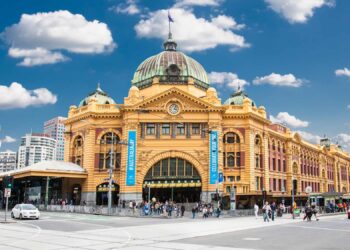Removing barriers for fund managers and super funds to transition customers to modern investment products would result in them retiring with cumulatively $16 billion more by 2050, according to the Financial Services Council (FSC).
The FSC’s Product Modernisation Research Report, prepared by EY, also found it would lift their collective retirement income by $22 billion during their retirement.
Product modernisation refers to the rationalisation of products and investment structures in a pragmatic and efficient manner by trustees (responsible entity or responsible superannuation entity) in the best financial interests of members or investors.
This is needed due to changes in legislation such as the Future of Financial Advice reforms and corporate strategy where product modernisation could reduce inefficiencies in M&A activity, duplicate options and unsuccessful product launches.
The report found that an individual aged 40 with a current balance of $80,000 could have an additional $198,676, from $484,005 to $683,689 by the time they retire in 2050 if superannuation trustees were permitted to move them to contemporary products without incurring tax penalties or regulatory barriers if they are currently invested in a legacy product.
It said: “Under most scenarios encountered by MISs, the products likely to be modernised comprise of a materially consistent investment mandate and underlying asset allocation. While this means that gross investment returns would remain similar, the products likely to be modernised generally comprise of higher fee structures associated with (i) bespoke commission and advice fee structures, and (ii) administration fees reflective of the cost base to operate those investment options / products.
“Products likely to be modernised often operate on older registries and administration systems with comparatively limited functionality and thus, offer less flexibility to the end customers. On the other hand, contemporary products generally operate on systems supported by enhanced digital capabilities, which allow customers and advisers to ‘self-serve’ for activities such as contributions, withdrawals (where allowed) and altering investment options based on risk appetite.
“Better consumer support is available for customers on contemporary products due to receiving greater training and experience on these products consistent with current laws and market practice. In contrast, FSC members have indicated it is challenging to train and maintain support staff with the detailed knowledge of all the product rules and intricacies for products likely to be modernised, leading to poorer customer experiences.”
“A product modernisation regime would support the government’s fiscal position, by lowering Government Age Pension outlays and raising new tax revenue, by almost $1 billion in the next decade, without having to raise new taxes on superannuation consumers,” FSC chief executive Blake Briggs said.
There are four groups of people the report found would benefit from the changes:
- Benefits to consumers including access to equivalent products with higher net investment returns driven by both higher expected investment performance and lower fee structures.
- Benefits to the government through greater tax receipts and savings due to reduced aged pension payments.
- Benefits to trustees through operational and administrative efficiencies.
- Benefits to regulators through a more competitive industry, driving better outcomes for the consumer thanks to operational efficiencies.
But barriers to modernisation include obtaining member consent, consent to modifying consumer rights and capital gains tax.





